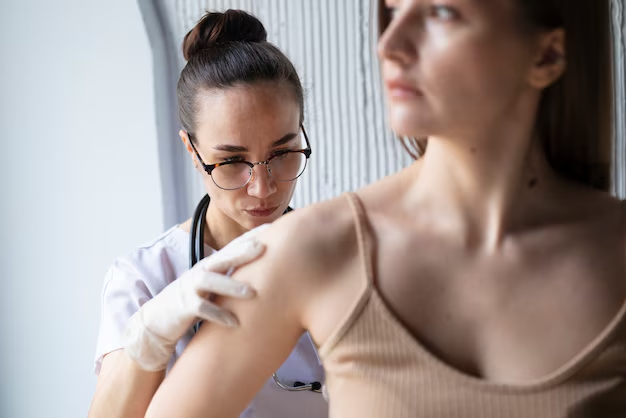What to Expect When Having a Tuberculosis Skin Test: Does It Really Hurt?
When you hear someone mention a "tuberculosis skin test," you might wonder, "Is it painful?" This question stirs curiosity not just because of our natural instinct to avoid pain, but also owing to concerns about an unfamiliar medical procedure. Let's dive deep into what a tuberculosis skin test involves, whether it hurts, and other pertinent details that provide a clearer understanding.
Understanding the Tuberculosis Skin Test
Tuberculosis, commonly referred to as TB, is an infectious disease primarily affecting the lungs, but it can also impact other areas of the body. To determine if someone has been exposed to the bacteria that cause tuberculosis, a tuberculosis skin test (TST) is often conducted. Officially known as the Mantoux tuberculin skin test, this method has been a staple in detecting latent TB infections for decades.
What Happens During the Test?
At its core, the TST is straightforward:
Injection of Tuberculin: A small amount of tuberculin is injected just beneath the skin on the inside of your forearm. It's a purified protein derivative used to elicit a reaction in those who have been exposed to TB bacteria.
Waiting Period: After the injection, you'll wait 48 to 72 hours before returning to the healthcare provider, who will then evaluate the reaction at the injection site.
Reading the Reaction: The healthcare professional will measure the induration (the raised or swollen area). A reaction indicates that your body recognized the tuberculin as something it had seen before, suggesting exposure to the TB bacteria.
Does the Tuberculosis Skin Test Hurt?
Now, for the big question worth answering: Does it hurt?
For most individuals, the pain experienced during a TST is minimal. The sensation is often compared to a quick pinch or sting, and many people find it less painful than a vaccination shot. The needle used in a TST is typically very fine, which helps minimize discomfort.
Factors Influencing Pain Perception
Several factors can influence how you perceive pain during the test:
- Individual Pain Tolerance: Some people naturally have a higher pain threshold.
- Skill of the Healthcare Professional: A practiced hand can make the process quicker and smoother.
- Anxiety Levels: Feeling anxious or nervous can heighten sensitivity to pain.
What to Expect After the Test
After undergoing a TST, some people experience mild reactions:
- Itching or Minor Swelling: It's common to feel slight itching or notice minor swelling or redness at the injection site.
- Bruising: Occasionally, a small bruise may appear.
These reactions typically subside in a few days and are rarely cause for concern. However, it’s crucial not to scratch or cover the site with a tight bandage.
Contextualizing the Tuberculosis Skin Test
Importance of the TST
Understanding why the TST is necessary can help alleviate concerns about the discomfort:
- Public Health: TB remains a significant global health concern. Detecting latent TB infections helps prevent outbreaks.
- Protecting Vulnerable Populations: Certain groups, like healthcare workers or those with compromised immune systems, may be at increased risk.
Alternatives to the Tuberculosis Skin Test
There are alternative methods for TB testing, which might interest those particularly concerned about discomfort:
- TB Blood Tests (IGRAs): These blood tests, including the QuantiFERON-TB Gold and the T-SPOT.TB, are alternatives offering similar accuracy without the need for a follow-up visit.
- Pros and Cons: While these blood tests eliminate the need for a second appointment, they might be more costly or less accessible, depending on your location.
Addressing Common Concerns
Let's address some frequently asked questions and concerns about the TST to improve understanding and alleviate anxiety:
Can You Prepare for the Test?
While there isn't much preparation required, here are some helpful tips:
- Stay Calm: Try relaxation techniques like deep breathing to ease anxiety.
- Inform the Provider: If you've had a past reaction to a TST, make sure to let the healthcare provider know.
What Happens If There's a Positive Reaction?
A positive TST doesn’t necessarily mean you have active TB. It indicates potential exposure, and further testing, like a chest X-ray, usually follows to determine if the infection is active.
Who Should Consider the Test?
Certain individuals are advised to get tested more regularly, including:
- Healthcare Workers
- People with a weakened immune system
- Individuals with close contact with someone who has TB
Practical Tips for Your Tuberculosis Skin Test Experience
To ensure a smooth experience, consider the following:
- Wear Comfortable Clothing: Ensure easy access to your forearm.
- Schedule Wisely: Book your test on a day when a follow-up is convenient.
- Monitor the Site: Keep an eye on the injection site, avoiding lotions or oils that might irritate the area.
Beyond the Pain: Emphasizing Health
While the discomfort from a TST is usually fleeting, the significance of the test transcends any temporary sting. With TB being a serious yet preventable and treatable disease, the moments spent getting tested pale in comparison to the potential benefits of early detection and prevention.
Insights to Ponder
The journey of understanding the tuberculosis skin test doesn't stop at whether it hurts. It's about being informed, reducing fear of the unknown, and recognizing the importance of a proactive approach to health. Whether you decide the minimal discomfort is worth the peace of mind, or pursue alternate testing methods, being informed empowers you to make the best choice for your health needs.
Summary & Key Takeaways
- Brief Sensation: 🩹 Most people experience only a tiny sting or pinch.
- Common Reactions: 🚫 Minor itching or swelling might occur; refrain from scratching.
- Testing Purpose: 🛡️ Essential for public health and detection of latent TB.
- Alternatives Available: 💉 TB blood tests offer another option for testing.
- Importance: 🌍 Especially recommended for high-risk groups and healthcare workers.
- Stay Informed: 🧠 Understanding the test helps alleviate anxiety and ensures preparedness.
